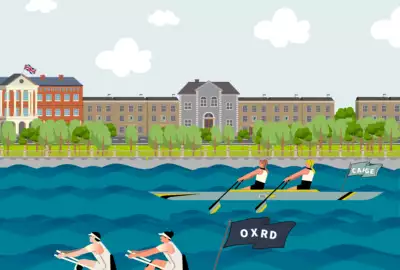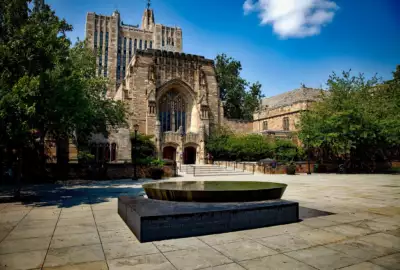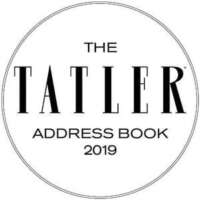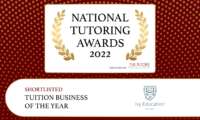Expert Insights
Oxbridge vs Ivy League: A Comparison Guide
Published 13th August 2025 by Alastair
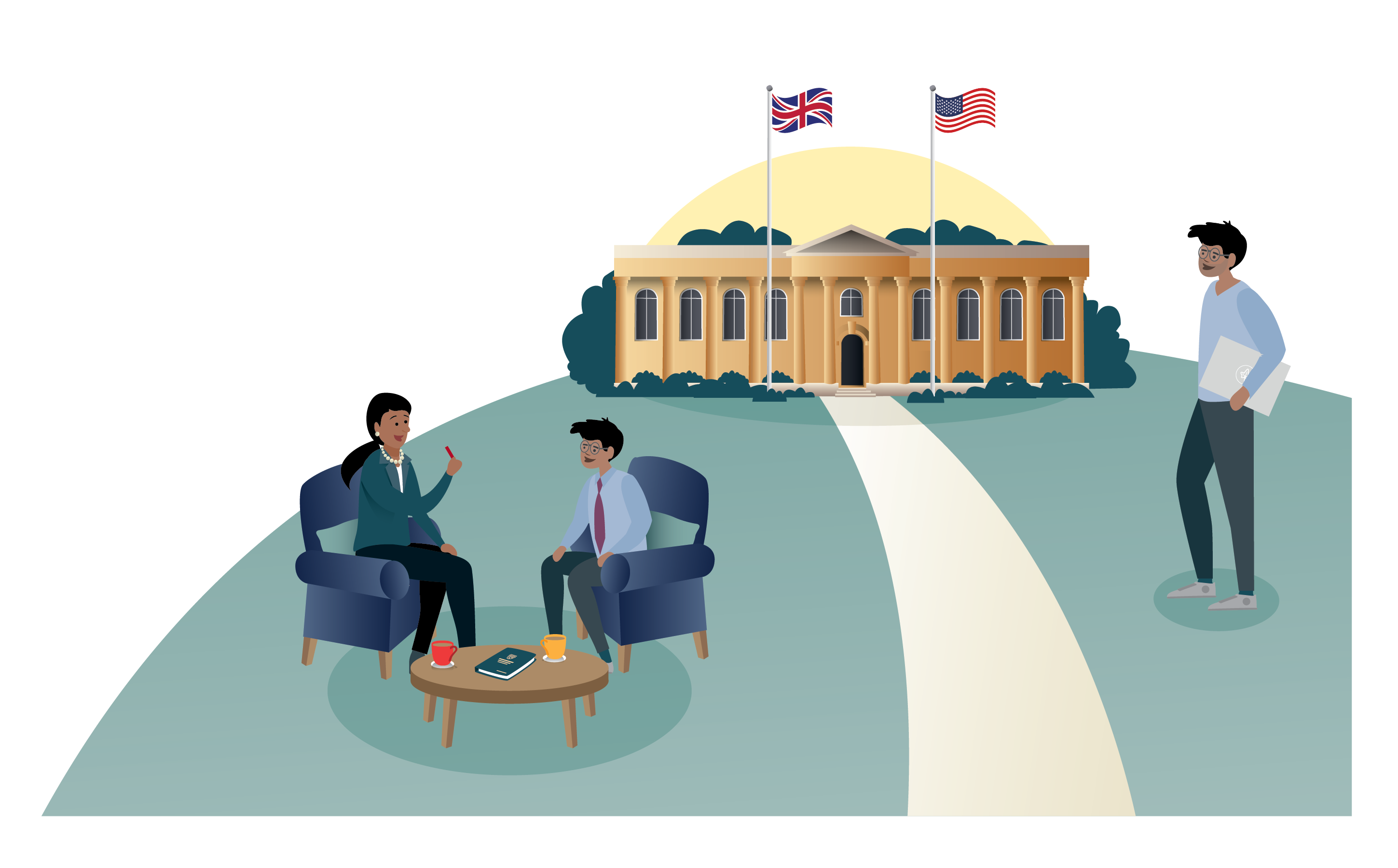
Two elite worlds, one big choice: which will shape your future?
Two names top the list for ambitious students: Oxbridge in the UK and the Ivy League in the USA. Both are world-famous for excellence, tradition, and influential alumni, but their teaching, admissions, and campus life are worlds apart.
This guide puts Oxbridge vs the Ivy League side-by-side, so you can see exactly how they differ and decide which path will help you thrive.
Read on!
P.S.: If you’re considering applying to universities in the UK, the USA, or both, our UK university consultancy and US university consultancy teams can help you plan every step with precision.
The Ivy League is an athletic conference of eight private universities in the United States: Harvard, Yale, Princeton, Columbia, the University of Pennsylvania, Brown, Dartmouth, and Cornell. Over time, the name has come to represent not just sporting competition but academic prestige, world-class research, and a tradition of producing leaders in politics, business, science, and the arts. These universities are located across the north-eastern USA and each has its own distinct character, campus culture, and academic strengths.
Oxbridge is a collective term for the University of Oxford and the University of Cambridge, two of the oldest and most distinguished universities in the English-speaking world. Both institutions operate under a collegiate system, where students belong to smaller, self-contained communities within the wider university. Oxford and Cambridge are celebrated for their centuries of tradition, intellectual rigour, and a unique tutorial (Oxford) or supervision (Cambridge) teaching model that offers close academic mentorship.
While each group of institutions is firmly rooted in its national context, both have global reputations that extend far beyond their borders. Understanding their history, structure, and academic focus is the first step in making an informed decision about which might be right for you.
If you want to learn more about Oxbridge, we've written a guide on that here.
Both Oxford and Cambridge, and the universities of the Ivy League, consistently appear at the top of global university rankings. These positions reflect not just academic output, but also faculty expertise, graduate employability, and the strength of research across disciplines.
In the QS World University Rankings 2026, for example, MIT currently holds the top spot, followed closely by Imperial College London, Stanford University, and the University of Oxford. Harvard University and the University of Cambridge are also firmly within the top ten. Ivy League institutions such as Princeton, Yale, and Columbia frequently appear within the global top 20, cementing their international standing.
Times Higher Education rankings paint a similar picture, with Oxford and Cambridge often trading places in the top positions and Ivy League members securing high marks for teaching quality and research influence. As of 2025, Oxford garners the top position, with MIT, Harvard, Princeton, and Cambridge following closely behind.
While these rankings are useful indicators of prestige, they shouldn’t be the sole factor in your decision-making. Reputation can open doors, but the best choice will align with your academic interests, learning preferences, and long-term career goals.
| Rank | QS 2026 — University | Country | THE 2025 — University | Country |
|---|---|---|---|---|
Source: QS World University Rankings 2026 (published 19 June 2025) and Times Higher Education World University Rankings 2025 (published 9 October 2024). Last checked: 12 August 2025. |
||||
| 1 | Massachusetts Institute of Technology (MIT) | United States | University of Oxford | United Kingdom |
| 2 | Imperial College London | United Kingdom | Massachusetts Institute of Technology (MIT) | United States |
| 3 | Stanford University | United States | Harvard University | United States |
| 4 | University of Oxford | United Kingdom | Princeton University | United States |
| 5 | Harvard University | United States | University of Cambridge | United Kingdom |
| 6 | University of Cambridge | United Kingdom | Stanford University | United States |
| 7 | ETH Zurich | Switzerland | California Institute of Technology (Caltech) | United States |
| 8 | National University of Singapore (NUS) | Singapore | University of California, Berkeley | United States |
| 9 | UCL (University College London) | United Kingdom | Imperial College London | United Kingdom |
| 10 | California Institute of Technology (Caltech) | United States | Yale University | United States |

Although both Oxford and Cambridge, and the universities of the Ivy League, attract exceptionally talented students, the path to securing a place differs significantly between the UK and the US.
Oxbridge Admissions
Applicants apply through UCAS, listing either Oxford or Cambridge (you cannot apply to both in the same admissions cycle for undergraduate study). A strong academic record in relevant A-levels (or equivalent qualifications) is essential. Many courses require applicants to take subject-specific admissions tests such as the TMUA, LNAT, or TSA, followed by intensive interviews designed to assess critical thinking and subject mastery. Offers are typically conditional on achieving high final exam grades.
Ivy League Admissions
In contrast, the Ivy League takes a holistic approach. Alongside strong academic performance, applicants submit SAT or ACT scores (some institutions are currently test-optional), multiple essays, teacher recommendations, and a detailed account of extracurricular achievements. Early decision or early action options are available at most Ivy League universities, which can increase an applicant’s chance of admission. Acceptance rates are typically in the single digits, and competition is fierce.
Academic Structure
Oxbridge follows a specialist model: from day one, undergraduates immerse themselves in a single subject, guided by weekly one-to-one or small-group tutorials (Oxford) or supervisions (Cambridge). The academic year is divided into three short, intensive terms.
Ivy League universities generally follow a liberal arts framework in the early years, encouraging students to explore a broad range of subjects before declaring a major. Teaching is delivered through a mix of lectures, seminars, and, at some institutions, small discussion groups or tutorials.
The choice between these systems often comes down to whether you prefer early specialisation and depth, or a more exploratory academic journey with flexibility to change direction.
Navigating either process requires a clear strategy from the outset. Our UK university consultancy specialises in Oxbridge preparation, while our US university consultancy guides students through every stage of the Ivy League application process.
The academic reputation of both Oxford and Cambridge, and of Ivy League universities, rests not only on admissions selectivity but on distinctive approaches to teaching and learning.
Oxbridge
At the heart of the Oxbridge experience is the tutorial (Oxford) or supervision (Cambridge) system. These are intensive, small-group or one-to-one sessions where students discuss their work directly with a subject expert. Tutorials demand significant independent study, critical thinking, and the ability to articulate ideas under scrutiny. The teaching calendar is split into three short terms of around eight weeks, creating a fast-paced rhythm that requires strong time management.
Ivy League
Teaching in the Ivy League varies by institution and discipline, but most courses combine lectures with smaller discussion sections or seminars. While certain subjects at universities like Harvard and Yale also use tutorials or freshman seminars for more personal interaction, the class sizes are generally larger than at Oxbridge. The academic year is longer, with two main semesters, allowing more time for in-depth projects, lab work, and internships alongside studies.
Key Differences in Learning Environment
Intensity vs. Breadth: Oxbridge offers highly concentrated academic engagement within a single subject, while Ivy League students often balance major requirements with electives across different fields.
Student–Faculty Contact: Tutorials provide unparalleled direct access to academic staff; in the Ivy League, small classes exist, but many courses still rely on lectures with teaching assistants.
Assessment: Oxbridge leans heavily on final examinations, with some coursework; the Ivy League uses a mix of continuous assessment, midterms, essays, and projects.
Ultimately, your preference may hinge on whether you thrive under the close intellectual challenge of regular one-to-one teaching or prefer the flexibility and variety of a more diverse class structure.
One of the biggest distinctions between studying at Oxford or Cambridge and at an Ivy League university lies in how early you specialise and how much freedom you have to shape your academic journey.
Oxbridge: Specialisation from Day One
At Oxbridge, you apply directly to a specific course (degree subject) and spend the entirety of your undergraduate years immersed in it. For example, if you apply for History, you won’t be taking unrelated modules in biology or computer science; your timetable is dedicated to deep, subject-specific study. This approach is ideal for students who already have a clear passion and want to develop expertise as quickly as possible. The structure means you emerge as a subject specialist, which can be advantageous for careers or postgraduate study that value depth over breadth.
Ivy League: Breadth Before Depth
In the Ivy League, the majority of undergraduates follow a liberal arts model for at least the first year or two. Students can try courses across disciplines, from literature to economics to environmental science, before declaring a major. Even once you’ve chosen a major, you’re often required to take “distribution requirements” in other fields. This system is particularly appealing if you have wide-ranging interests, are undecided on your ultimate focus, or want to combine subjects in a way that isn’t possible under the UK model.
Why It Matters
Career flexibility: A broad education can keep career paths open, but early specialisation can fast-track you towards advanced study or technical expertise.
Skill development: Oxbridge students often build exceptional depth in research and subject knowledge; Ivy League students tend to develop strong cross-disciplinary thinking and adaptability.
Commitment level: Oxbridge requires certainty in your chosen field; the Ivy League offers more space to explore and pivot.
Deciding between these models is as much about self-awareness as it is about prestige; knowing whether you thrive on single-minded focus or a more varied intellectual diet will help guide your choice.
While academic reputation draws students to both Oxford and Cambridge, and the Ivy League, the experience outside the classroom often defines your memories and shapes your network for years to come.
Ivy League: Holistic Admissions, Holistic Life
In the Ivy League, extracurricular involvement isn’t just encouraged, it’s expected. Think about it: If you've ever watched or read an American high school or coming-of-age movie or book, the main character is always coming home from "soccer" practice (that's football for the Brits), or marching band, or from some other after-school club. That's because extra-curricular activities are highly encouraged for children growing up in the U.S. The emphasis on leadership, athletics, community service, and creative pursuits that form American life is reflected in the admissions process, which, in turn, continues on campus. Student life is busy, with hundreds of clubs, varsity and intramural sports, music ensembles, theatre productions, political societies, and service organisations. Many universities compete in NCAA Division I sports, and game days can be major social events. Alumni often remain deeply connected through these shared experiences, creating lifelong personal and professional networks.
Oxbridge: Collegiate Traditions & Intellectual Societies
The collegiate system often shapes Oxbridge extracurriculars. Each college has its very own clubs, sports teams, music groups, drama societies, and student committees. While intercollegiate sports exist, the culture is generally less dominated by athletics than in the Ivy League. Instead, you’ll find a strong tradition of intellectual societies, such as the Oxford Union or the Cambridge Union, which host debates with global leaders and public figures. Rowing is one notable sporting tradition, with the annual Boat Race against the rival university a highlight of the year.
Atmosphere & Community
Ivy League: Lively campus life with a strong sense of school spirit and a culture of multi-club involvement.
Oxbridge: A close-knit collegiate community where social and academic life often intertwine, set against a backdrop of centuries-old traditions.
Social rhythm: Ivy League semesters allow for longer-term projects and sustained extracurricular commitments; Oxbridge’s short terms create intense bursts of activity.
Choosing between these environments may come down to whether you’re drawn to a large-scale campus culture with high-profile athletics, or to the intimate traditions of a centuries-old academic community.

For many applicants, the decision between studying in the UK or the US comes down to more than academics. Let's talk about the elephant in the room: the disparity in attendance cost and availability of financial aid between UK and US Universities.
Oxbridge: Lower Fees for UK Students, Higher for Overseas
For UK home students, tuition at Oxford and Cambridge is currently capped at around £9,535 per year, with government loans available to cover tuition and (for eligible students) living costs.
International students, however, face fees ranging from £27,000 to over £45,000 per year, depending on the course. Specialist degrees such as Medicine can exceed £70,000 annually once tuition and living expenses are combined. Scholarships and bursaries are available but limited, and competition for them is intense.
Ivy League: Higher Sticker Price, Generous Need-Based Aid
Published tuition for Ivy League universities typically falls between $55,000 and $65,000 USD per year (about £40,000–£48,000), with total annual costs including housing and meals often reaching $75,000–$90,000 USD.
However, many Ivy League institutions offer generous need-based financial aid to both domestic and international students, in some cases covering the full cost for families below certain income thresholds. Merit-based scholarships are rare, as these universities focus on financial aid tied to demonstrated need.
Comparing the Bottom Line
UK students at Oxbridge: Significantly lower costs than studying in the US, especially with access to UK student loans.
International students: May find Ivy League costs comparable or even lower *if* they qualify for substantial need-based aid.
Living expenses: Cambridge and Oxford have relatively modest living costs compared to major US cities like New York or Boston, though London-adjacent expenses (for visiting, internships, etc.) can add up.
Ultimately, the financial equation depends on your residency status, eligibility for aid, and long-term return on investment. Comparing net costs, after factoring in scholarships, bursaries, and aid packages, is essential before making a decision.
Graduating from Oxford, Cambridge, or an Ivy League university signals to employers and postgraduate programmes that you’ve met some of the highest academic and extracurricular standards in the world. Yet the nature of those opportunities, and the networks you join, can differ.
Oxbridge
Oxford and Cambridge alumni can be found leading governments, shaping global policy, directing multinational organisations, and pioneering research across disciplines. The universities’ global reputations, combined with their rigorous academic training, make graduates highly sought after in law, finance, academia, public service, and technology. Both institutions maintain strong careers services, which connect students to internships, graduate schemes, and alumni mentors worldwide.
Ivy League
The Ivy League has produced U.S. presidents, Supreme Court justices, Nobel laureates, entrepreneurs, and cultural icons. Its alumni networks span every major industry and region, offering extensive connections for internships, venture funding, and career placement. Many Ivy League institutions also have strong links to employers in North America and Asia, reflecting the global reach of their graduates.
Comparing the Global Reach
Networks: Both offer lifetime access to influential alumni communities; Ivy League networks may be more prominent in the Americas, while Oxbridge has exceptional reach in Europe and the Commonwealth.
Employability: Graduates from both are viewed as highly adaptable, intellectually rigorous, and capable of leadership.
International mobility: The name recognition of either an Oxbridge or Ivy League degree often facilitates work visas, postgraduate admission, and opportunities in multinational organisations.
In the end, the choice is not about which name “opens more doors” globally, both will, but which educational experience better prepares you for the kind of doors you most want to walk through.

Beyond academics and rankings, the culture and physical environment of a university can shape your daily life as much as your degree. Oxford, Cambridge, and Ivy League campuses each carry their own character, and for many students, that feeling is what seals the decision.
Oxbridge
The historic architecture, cobblestone streets, and centuries-old colleges give Oxford and Cambridge an unmistakable sense of tradition. Each college functions as a self-contained community, with its own dining hall, library, chapel, and gardens. Life moves to the rhythm of short, intense terms punctuated by formal dinners, May Balls, and centuries-old ceremonies. Both cities are compact, so students typically walk or cycle to lectures, and the academic and social spheres are tightly intertwined.
Ivy League
The Ivy League offers a much wider range of settings — from Columbia’s urban campus in the heart of New York City to Dartmouth’s rural setting in the New Hampshire mountains. Campus culture varies: some have a bustling, city-like energy with constant events and networking opportunities; others feel more like small towns centred around the university. Many campuses blend historic buildings with modern research facilities, and traditions range from annual sports rivalries to quirky student rituals unique to each institution.
Key Differences in Atmosphere
Scale & setting: Oxbridge campuses are interwoven with their host cities; Ivy League settings range from metropolitan to pastoral.
Tradition vs variety: Oxbridge traditions are deeply rooted and shared across centuries; Ivy League traditions are more diverse and institution-specific.
Pace of life: Oxbridge terms are shorter and more intense; Ivy League semesters allow for a steadier academic and social pace.
Your surroundings will influence not just your studies, but your friendships, your extracurricular life, and your sense of belonging. The question is whether you’re drawn to the concentrated, tradition-rich environment of Oxbridge or the varied and often larger-scale settings of the Ivy League.
Daniel — The Specialist
Daniel has known since he was 14 that he wants to be a physicist. He applies to Cambridge for Natural Sciences. By his second week, he's deep in particle physics problem sets, lab work, and one-to-one supervisions with leading researchers. His academic year is short but intense, and every assignment builds her expertise. By graduation, Daniel is ready for a master’s programme without needing to “catch up” in his subject.

Sophie — The Explorer
Sophie is fascinated by history, economics, and environmental policy — but doesn’t want to commit to one too soon. She enrols at Yale, where she samples classes in all three areas alongside writing seminars and a statistics course. After two years, she declares a double major in History and Environmental Studies, and spends a semester abroad in Europe. Her degree has breadth, and she’s picked up a diverse set of skills and contacts in multiple industries

Why this matters for you
Ask yourself:
Do you thrive when focusing intensely on one field, or do you feel energised by connecting ideas across disciplines?
Do you have a career path in mind that benefits from early expertise, or do you want to leave your options open for longer?
Would you rather spend your academic energy going deep or going wide?
It’s possible to apply to Oxford or Cambridge and one or more Ivy League universities in the same year, but the timelines and requirements don’t line up neatly. Here’s how it plays out if you try to do both:
Year Before Application
Spring/Summer (UK) – Oxbridge applicants start drafting UCAS personal statements, revising for predicted grades, and preparing for any admissions tests.
Spring/Summer (US) – Ivy League hopefuls may take SAT/ACT exams, line up recommendation letters, and start brainstorming essay topics.
Application Year
August
UCAS system opens for UK universities.
Ivy League Common Application opens.
September
Oxbridge: Deadline to register for most admissions tests (TSA, BMAT, etc.).
Ivy League: Students begin writing multiple essays (Common App personal statement + supplementary essays).
October
Mid-October – Oxbridge UCAS deadline (much earlier than other UK universities).
Many Ivy League Early Action/Early Decision deadlines approach in early November, so essay drafts should be nearly complete.
November
Oxbridge admissions tests sat (on set dates).
Ivy League Early applications submitted (usually Nov 1 or Nov 15).
December
Ivy League Early results released; Regular Decision essays polished.
Oxbridge interviews take place.
January
Ivy League Regular Decision deadline (Jan 1–5 at most universities).
February–March
Oxbridge offers (conditional or unconditional) are sent out.
March–April
Ivy League Regular Decision results announced.
The Overlap Challenge
Applying to both means juggling:
Two completely different essay formats (UK: academic focus; US: personal narrative + multiple supplements).
Admissions tests for Oxbridge vs SAT/ACT for Ivy League.
Different timelines for decisions, making strategic planning essential.
If you go for both, you’ll need discipline, early preparation, and, ideally, guidance from people who understand each system’s quirks.
Managing the timelines, essays, and tests for two application systems is challenging — but achievable with expert guidance. Our consultancy team can coordinate both UK university applications and US university applications in a single, streamlined plan.
| Period | Oxbridge (UK) | Ivy League (US) | Notes |
|---|---|---|---|
| Year Before Application | |||
| Spring–Summer | Draft UCAS PS; shortlist colleges/courses; begin test prep | Plan SAT/ACT; shortlist universities; line up recommenders | Build reading list; log activities |
| Application Year | |||
| August | UCAS opens | Common App opens; start essays | Create master timeline |
| September | Register for admissions tests (e.g., TSA, LNAT, etc.) | Draft supplements; confirm test policies | Check test clashes |
| Mid-October | UCAS deadline (Oxbridge) | ED/EA essays near final | Proofread statements |
| Early November | Admissions tests (course-specific) | ED/EA submit (Nov 1/15) | Backup plans ready |
| December | Interviews | ED/EA results; refine RD essays | Time management is key |
| January | — | RD deadline (Jan 1–5) | Upload final docs early |
| Feb–Mar | Offers released (often conditional) | — | Plan grades strategy |
| Mar–Apr | — | RD results released | Compare net cost/aid |
| Post-Offer | |||
| May–July | Meet offer conditions; accommodation | Accept offer; housing; visa (if intl.) | Sort finances & documents |
Don't worry, we'll go easy on the tables in the next section...
| Factor | Oxbridge | Ivy League |
|---|---|---|
| Course Structure | Early specialisation in one subject | Broad curriculum before major declaration |
| Teaching Style | 1:1 or small-group tutorials/supervisions | Lectures, seminars, some small classes |
| Admissions | UCAS, admissions tests, interviews | Common App, essays, recommendations, tests |
| Academic Calendar | Three 8-week terms | Two longer semesters |
| Extracurricular Focus | Collegiate societies, rowing, traditions | Sports, clubs, service, leadership |
| Cost (Annual) | £9.5k (UK), £27–£45k+ (Intl.) | $75k–$90k total (aid available) |
| Global Reputation | Strong in UK, Europe, Commonwealth | Strong in Americas, Asia |
Quick Takeaways:
Oxbridge is academically intense and highly specialised from day one, perfect if you already know your path.
The Ivy League is more flexible and holistic, great if you want to explore before committing.
Costs vary sharply based on residency and aid; reputation is stellar in both cases, though influence can tilt toward each institution’s home regions.
Now, let's move on to the section we've all been waiting for: Which one should I choose?
Picking between Oxford/Cambridge and an Ivy League university is less about prestige and more about fit. Tick the statements that feel true for you, then see which side you lean toward.
I already have a clear subject I want to study in depth from day one.
I enjoy being challenged one-to-one (or in very small groups) and defending ideas in real time.
Short, intense terms sound motivating rather than stressful.
I prefer exams/essays that test deep subject knowledge over lots of ongoing assessments.
I’m happy in a close-knit, tradition-rich collegiate community.
Lower fees as a UK home student (or a simpler fee structure as an international student) matter a lot.
I want Europe-centric opportunities and networks (with strong global recognition too).
I want to explore courses across disciplines before declaring a major.
A holistic environment that values leadership, service, sport or arts alongside academics appeals to me.
A longer semester rhythm would help me balance classes, projects, and internships.
Continuous assessment and multiple essays/projects fit my learning style.
Big-campus energy or strong city access sounds exciting.
Need-based financial aid could make a higher sticker price workable.
I aim to build networks and career options in North America (and globally).
Consider course-by-course differences (some Oxbridge degrees offer broader first years; some Ivies have very structured majors).
Compare net cost (after aid/scholarships), not sticker prices.
Map your 5–10 year plan: which route best develops the skills and connections you’ll need?
The 5-lecture rule: If sitting five lectures outside your main subject next week excites you, that’s a point to the US model; if it feels like a distraction from your passion, point to Oxbridge.
The tutorial test: If weekly, probing discussions on your subject sound thrilling (and you want lots of them), point to Oxbridge; if you prefer variety with some small seminars plus bigger lectures, point to the Ivy League.
Shortlist 3–5 specific courses/majors on each side and compare syllabi, assessment types, and internship options.
Talk to current students/alumni from both systems in your intended field.
Draft two mini statements (100–150 words): one subject-focused (UK style) and one personal narrative (US style). Which feels more natural?
If your answers point toward Oxbridge, explore how our UK university consultancy can help you craft a standout application. If they lean toward the Ivy League, see how our US university consultancy can position you for success.
Choosing between Oxford or Cambridge and the Ivy League isn’t simply about picking the “best” university on paper, it’s about finding the place where your ambitions, learning style, and life plans align. Both routes demand hard work, intellectual curiosity, and a readiness to embrace challenge. Both can open doors to global networks, transformative opportunities, and careers that shape the future.
The real question is: Which environment will help you thrive?
Is it the focused, tradition-rich intensity of Oxbridge, with its one-to-one academic mentorship and centuries of scholarly excellence?
Or the expansive, multifaceted Ivy League experience, with its liberal arts flexibility, campus energy, and far-reaching alumni network?
Whichever path you’re drawn to, preparation is everything. The application processes are complex, the competition is fierce, and the margin for error is small. That’s where expert guidance can make the difference between a strong application and an outstanding one.
At Ivy Education, our experienced consultants understand both systems inside and out. We’ve helped students secure places at Oxford, Cambridge, and every Ivy League university, guiding them through every step, from refining academic profiles to crafting compelling personal statements and essays, to interview coaching and admissions strategy.
If you’re serious about aiming for the top, let’s make sure your application reflects your very best.
Book your consultation with Ivy Education today and take the first step toward your future.
The Ivy League consists of eight private universities in the north-eastern United States: Harvard University, Yale University, Princeton University, Columbia University, the University of Pennsylvania, Brown University, Dartmouth College, and Cornell University.
“Oxbridge” is a collective term for the University of Oxford and the University of Cambridge, the two oldest and most prestigious universities in the UK, known for their academic rigour and unique tutorial or supervision teaching style.
Yes, but you’ll need to manage two very different application processes, timelines, and requirements. Oxbridge has an earlier UCAS deadline and often requires admissions tests and interviews, while the Ivy League uses the Common Application and places heavy emphasis on essays, recommendations, and extracurriculars. Careful planning — ideally with expert support — is essential.
For UK students, Oxbridge tuition is significantly lower due to capped fees and access to government loans. For international students, the cost difference narrows, especially when factoring in the generous need-based aid available at many Ivy League universities. Comparing net cost (after aid) is key.
Both have exceptional reputations worldwide. Oxbridge degrees tend to carry particular weight in the UK, Europe, and the Commonwealth, while Ivy League degrees have especially strong recognition in North America and Asia.
Both are extremely selective. Oxbridge acceptance rates for undergraduates typically hover around 15–20%, while Ivy League acceptance rates are usually below 10% (and below 5% at some universities). The competition is intense in both cases, but the criteria for selection differ.
Think about whether you prefer early specialisation and a tradition-rich academic environment (Oxbridge), or a broad, flexible curriculum with a strong extracurricular focus (Ivy League). Also factor in cost, location, and where you want to build your professional network.

